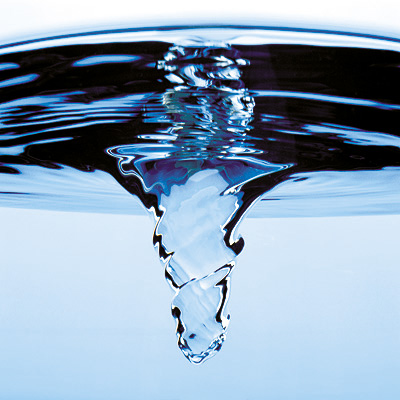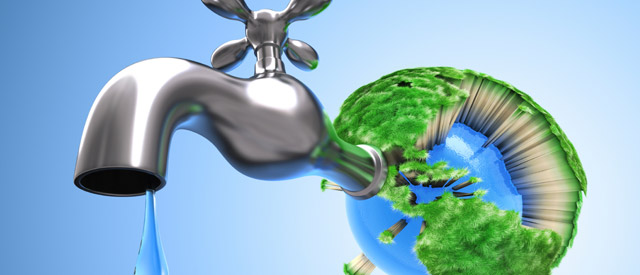 Satellite technology helps monitor water quality in lakes
Satellite technology helps monitor water quality in lakes
New research reveals how scientists can monitor water quality in European lakes using sensors mounted on satellites. The technique is a promising and cost-effective new tool to classify and monitor the ecological status of lakes more reliably under the Water Framework Directive (WFD).
Chlorophyll-a is a pigment in phytoplankton (microscopic aquatic green plants and algae) that harvests sunlight, enabling phytoplankton to grow. Monitoring the concentration of chlorophyll-a in European lakes as an indicator of ecological health (or phytoplankton population) is an important part of the WFD1.
In most European countries, sampling of chlorophyll-a in lakes is limited to a few locations and samples per year, depending on the budget and workforce. However, scientists know that changes in chlorophyll-a concentration occur over small distances (hundreds of metres) and short timescales (days to weeks). Therefore, relying on these occasional and quick measurements to assess the biological health of a lake is likely to lead to errors.
Scientists under the EULAKES2 project revealed how chlorophyll-a can be detected by sensors mounted on satellites that orbit the earth. The concentration of chlorophyll-a can be estimated by measuring the amount of light leaving the surface of the water at particular wavelengths compared to natural sunlight, i.e. the colour of the water. A satellite can ‘sample’ a large area simultaneously, providing a snapshot, to investigate how chlorophyll-a changes locally. An image of the same area can be produced every few days, to investigate how concentration changes with time.
The EULAKES scientists used over 200 satellite images to estimate chlorophyll-a concentration in inland waters for a region in the European Alps, covering 12 different sized lakes. The satellite images were acquired between 2003 and 2009 by the MERIS (MEdium Resolution Imaging Spectrometer) sensor on board a European Space Agency satellite. The scientists identified features of the lakes that are difficult to detect with conventional sampling, such as short-term fluctuations in chlorophyll-a, sewage inflow (points of high nutrient input and persistent high chlorophyll-a) and rapidly changing conditions in the smaller lakes caused by wind mixing.
To compare with conventional WFD sampling, the scientists selected a point in the middle of each lake on a specific day (set by the WFD to represent each season). They compared the satellite-derived concentration at that point with ‘ideal’ reference values corresponding to the particular type of lake (i.e. high altitude, low nutrient), also set by the WFD. In most cases, the scientists found that the lakes were of ‘high’ or ‘good’ status. They then found that the outcome could change significantly if a different date was chosen within the same season. For example, the ecological status assigned to Lake Como changed from ‘high’ to ‘moderate/poor’ between two different dates. In Lake Geneva, the maximum spring chlorophyll-a concentration doubled from 5 mg/m3 to 10 mg/m3 in less than a week. The scientists compared the concentrations on the single dates specified by the WFD to represent each season against all the available satellite-derived chlorophyll-a values for that season. They found that the single value was not representative of the average seasonal concentration, in some cases capturing exceptionally high or low values.
The scientists recommend that remotely sensed measurement of chlorophyll-a should be exploited for more reliable monitoring of water quality in European lakes under the WFD. By establishing protocols to interpret the data, the technique could also ensure consistency between different Member States.
- See: http://ec.europa.eu/environment/water/water-framework/index_en.html
- EULAKES (European Lakes under Environmental Stressors) is co-financed by the European Regional Development Fund. See: www.eulakes.eu
| Contact information |
Bresciani, M., Stroppiana, D., Odermatt, D., Morabito, G & Giardino, C. (2011). Assessing remotely sensed chlorophyll-a for the implementation of the Water Framework Directive in European perialpine lakes. Science of the Total Environment. 409: 3083-3091.
(email: bresciani.m@irea.cnr.it ) |
|---|---|
| News type | Inbrief |
| File link | n/a |
| Source of information | EULAKES (European Lakes under Environmental Stressors) project / Bresciani, M., Stroppiana, D., Odermatt, D., Morabito, G & Giardino, C. (2011). Assessing remotely sensed chlorophyll-a for the implementation of the Water Framework Directive in European perialpine lakes. Science of the Total Environment. 409: 3083-3091. |
| Keyword(s) | water monitoring, lakes, satellite technology, EU-WFD |
| Subject(s) | ANALYSIS AND TESTS , CHARACTERISTICAL PARAMETERS OF WATERS AND SLUDGES , INFORMATION - COMPUTER SCIENCES , MEASUREMENTS AND INSTRUMENTATION , METHTODOLOGY - STATISTICS - DECISION AID , PREVENTION AND NUISANCES POLLUTION , TOOL TERMS , WATER QUALITY |
| Relation | http://ec.europa.eu/environment/water/water-framework/index_en.html |
| Geographical coverage | n/a |
| News date | 03/10/2011 |
| Working language(s) | ENGLISH |
 you are not logged in
you are not logged in





